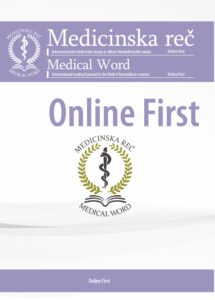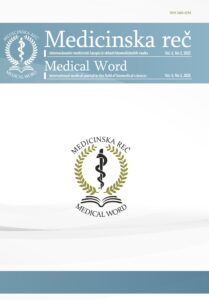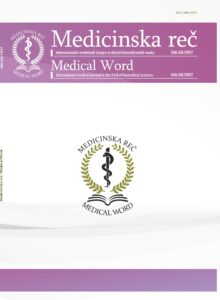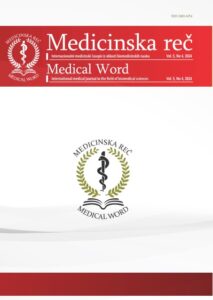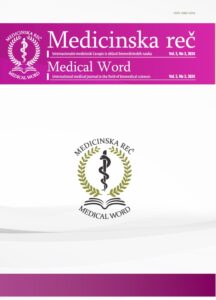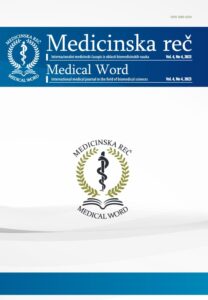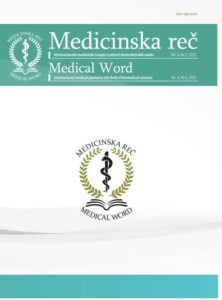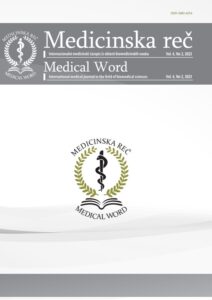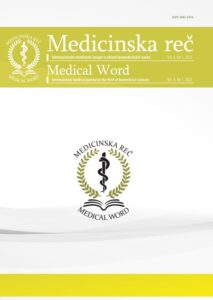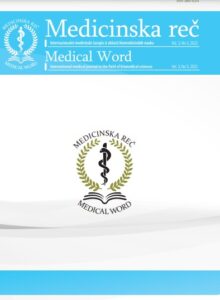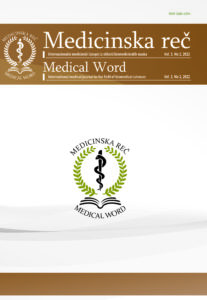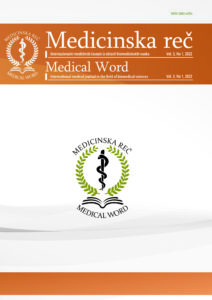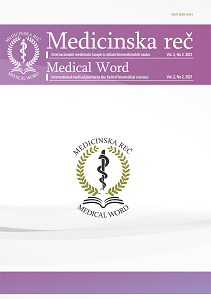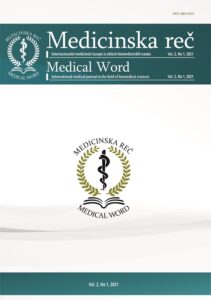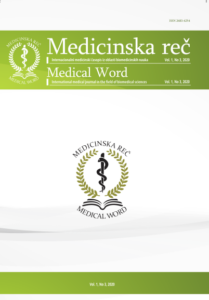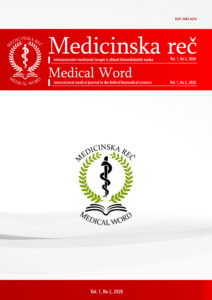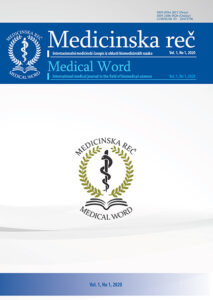Management of medical waste in the territory of Pčinja administrative district
Original article
Ivana Zlatković, Svetlana Bogdanović, Gordana Bogdanović, Jelena Marković, Zvonko Zlatanović, Dobrila Ranđelović, Slobodan Stefanović
72–75
https://doi.org/10.5937/medrec2203072Z
Abstract
Medical waste is defined as all waste generated in healthcare facilities, research facilities, and laboratories. It represents a heterogeneous mixture of waste that has the character of communal and high-risk/hazardous waste, covering 10-25% of the total generated waste. Medical waste management is a set of measures that include the collection, sorting, packaging, labelling, storage, transportation, treatment, or safe disposal of medical waste.
The aim of the work is to assess the amount and dynamics of medical waste generation in the territory of the Pčinja district. In accordance with the aim of the work, the methods of analysis and synthesis were used as research methods, because the work is based on key strategic documents and programs and measures of competent authorities, in the control and management of medical waste in the territory of Pčinja district. It was also necessary to perform the selection, analysis, and processing of the results of previous research in the mentioned area.
The results show that the Vranje Health Center is the only institution in charge of treating medical waste in the territory of the Pčinjа district. For this purpose, this institution is equipped with devices and equipment for the treatment of medical waste. They include 2 autoclaves and 1 shredder, as well as 3 special-purpose vehicles. The main treatment of medical waste is carried out by the method of steam sterilization under pressure. The total monthly capacity of the central treatment site is about 5.5 tons of infectious medical waste. It is necessary to continue to implement the started process of mandatory classification of medical waste at the place of origin into hazardous and non-hazardous. All healthcare institutions and veterinary organizations where medical waste is generated are required to draw up waste management plans and appoint a responsible person for waste management in accordance with the law. After the temporary solution of treatment of infectious medical waste by disinfection and sterilization, followed by grinding and disposal at the landfill, it is necessary to build a facility for the thermal treatment of this waste – an incinerator.
Key words: medical waste, the Pčinja district, waste management
Literatura
- Agencija za zaštitu životne sredine, Upravljanje otpadom u Republici Srbiji 2011–2019, Beograd, 2020.
- Pravilnik o kategorijama, ispitivanju i klasifikaciji otpada („Službeni glasnik RS“, br. 56/2010, 93/2019 i 39/2021).
- Pravilnik o upravljanju medicinskim otpadom („Službeni glasnik RS“, br. 78/10).
- Petrović D, Pop-Lazić I, Petrović P. Uticaj preduzetništva u cirkularnoj ekonomiji na regionalni razvoj, Univerzitet u Nišu, Ekonomski fakultet Niš, XXIV naučni skup: Regionalni razvoj i demografski tokovi zemalja Jugoistočne Evrope, 2019: 413-42.
- Vuković A, Riznić D, Vuković M. Cirkularna ekonomija u funkciji regeneracije prirodnih ekosistema, Ecologica 2020; 27(98): 209-16.
- Tripković A, Arsić Lj, Dobričanin S. Izazov funkcionisanja i razvoja malih i srednjih preduzeća u cirkularnoj ekonomiji. Ecologica. 2021; 28(101): 50-6.
- Papović Z, Đorđević S, Postolov K. Investicije u zaštitu životne sredine i potrebe za izveštavanjem o zaštiti životne sredine kao deo društvenog poslovanja. Ecologica 2019; 26(96): 577-82.
- Todorović M. Tretman otpada u Republici Srbiji, Napredak 2020; 1(3): 131-44.
- Strategija za upravljanje otpadom za period 2010–2019. godine (“Sl. glasnik RS”, br. 29/2010).
- Program upravljanja otpadom u Republici Srbiji za period 2022–2031. godine (“Sl. glasnik RS”, br. 12/2022).
- Regionalni plan upravljanja otpadom za Pčinjski okrug 2013–2023. godina. Vranje; 2012.
- Plan za integrisano upravljanje otpadom u Opštini Bujanovac. Bujanovac: Opština Bujanovac, Opštinska uprava, Kancelarija za lokalni ekonomski razvoj Bujanovac; 2010.


